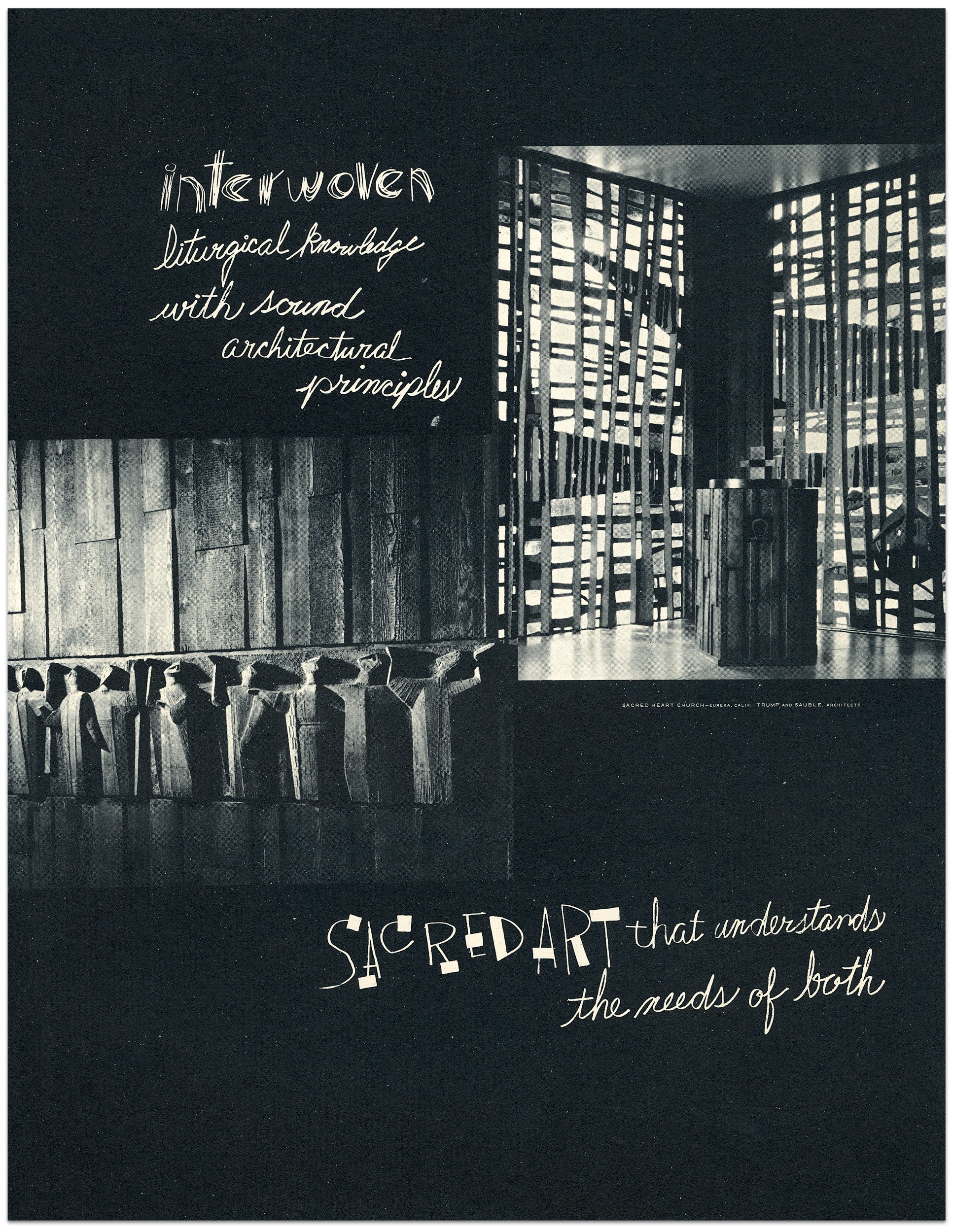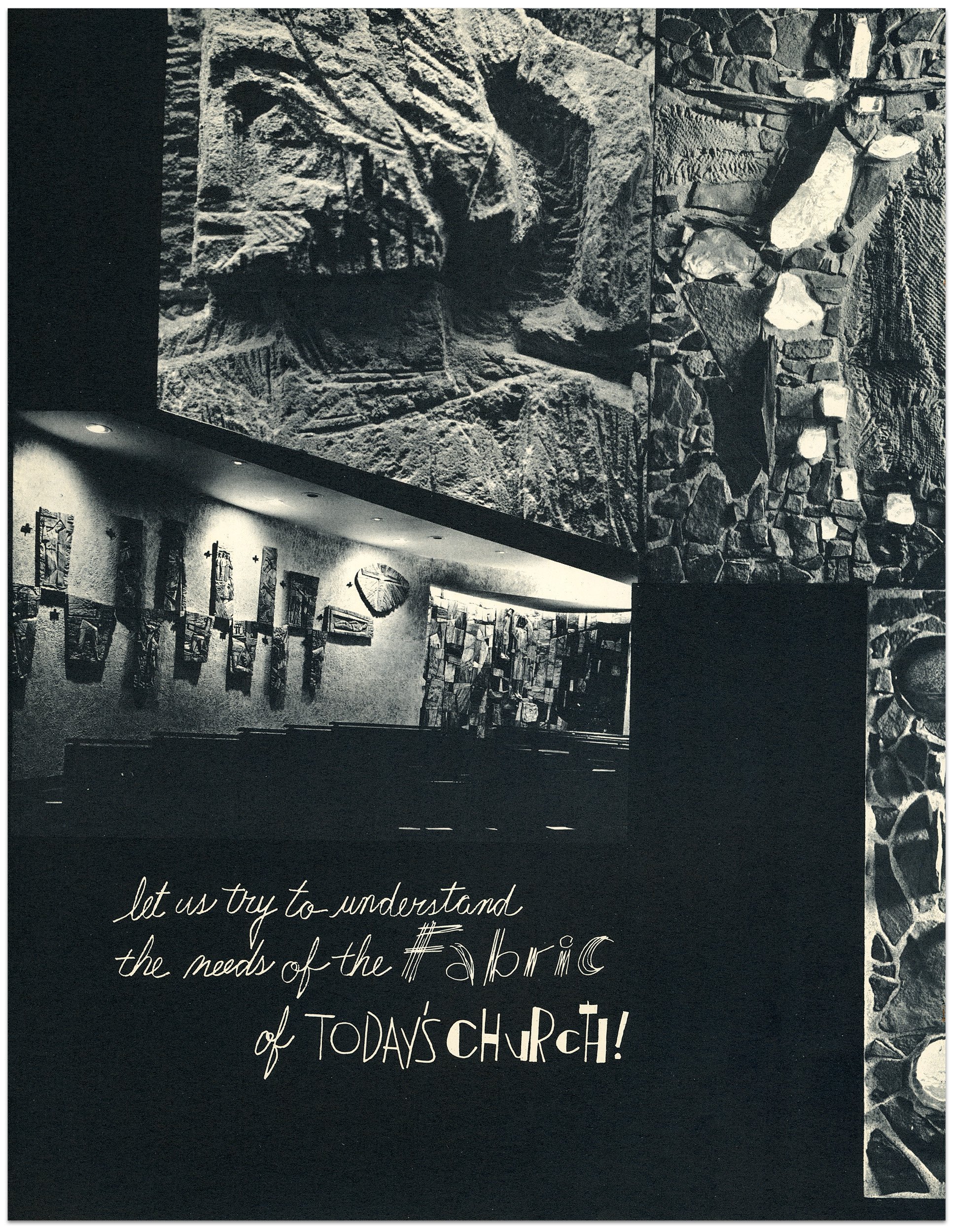1956-1976 | Jonynas and Shepherd Art Studio, Inc.
In 1956, Don and his mentor, Vytautas Kazimieras Jonynas (1907-1997) formed a Design and Artisan Studio that would last for twenty years. They specialized in churches and stained glass — hiring and working with teams of artisans and craftspeople based on what the project called for. Their projects included architectural design in conjunction with sculptural and interior components, such as:
Stained glass windows
Major high relief interior and exterior sculpture
Metalware
Altars
Pews
Carved doors
It was out of a deep collaboration with each community of people that Don felt a more personal, culturally relevant solution could take form: “When I am working in the fields of environmental art and design and industrial design, my approach is that of a holistic designer. The design solutions emerge out of an understanding of regional and cultural history, humanistic concerns and architectural style.” –D.A.S.
Vytautas Kazimieras Jonynas and Don Shepherd, 1966
Noted projects included high relief concrete sculptures for The Vatican Pavilion at the New York World’s Fair (1964-65); Sacred Heart Church, Eureka, California (one of the first new Catholic “churches-in-the-round” on the West Coast, 1965); The Church of the Ascension in Hamden, Connecticut (1968); the Saint Labre Indian Mission on the Northern Cheyenne Indian Reservation in Ashland, Montana (1971).
Jonynas and Shepherd Art Studio Brochure








What is the fabric of the new church?
The early 1960s was a time of change in the Catholic Church. The second Vatican Council (1962-65) was called by Pope John XXIII with the intent of updating the church to better connect with people in an increasingly secular world. Changes included a shift from delivering the Mass in Latin to local languages instead, a greater role for the congregation itself, and an emphasis on promoting unity among the world's Christian Churches and religious freedom in general.
Additionally, the Council provided a new freedom in architectural guidelines that were quite general in tone: a directive that architecture in all its aspects be designed to stimulate maximum participation in the Mass by the congregation, and that the Mass be celebrated with the priest facing the congregation.
This new freedom to be more experimental in design expression was a perfect match with Don’s exploration of new materials for the art and design of a church. It also fit well with his natural process of incorporating deeper cultural connections with the communities he worked in and with — pulling from their history, traditions, and where they found meaning and beauty.





























